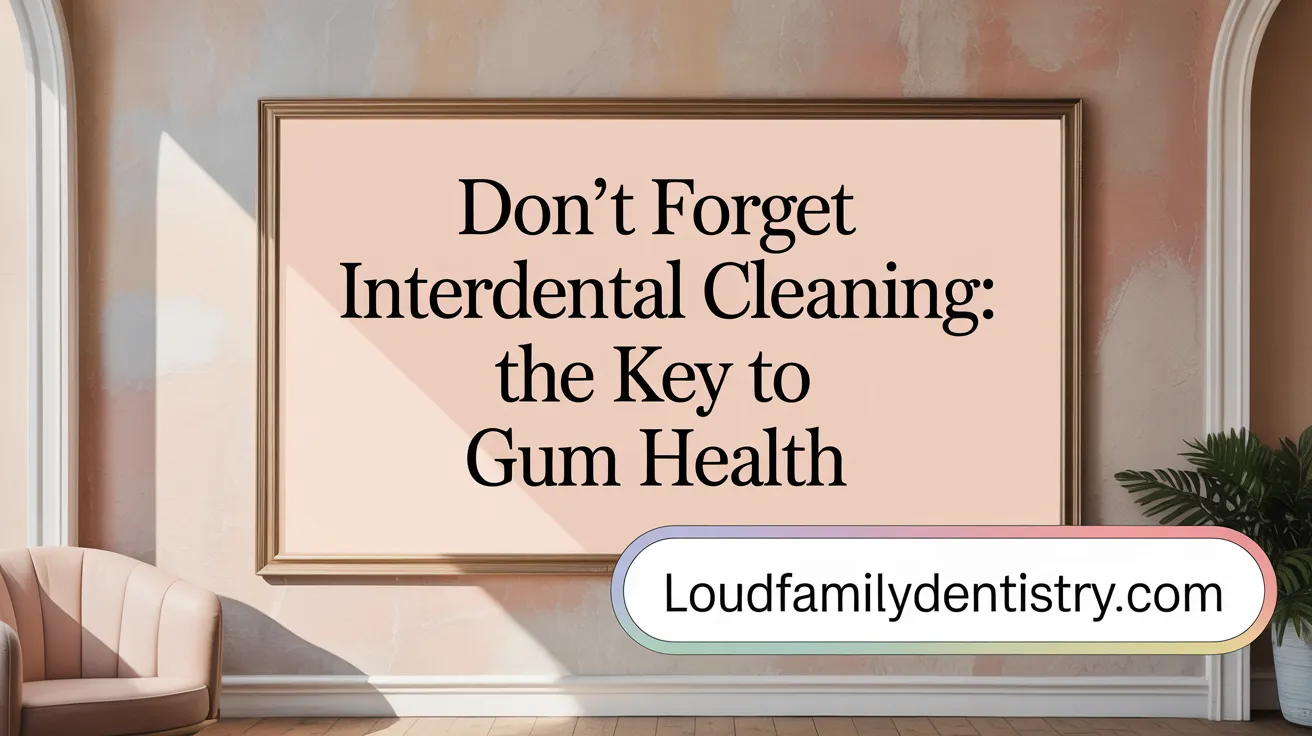Supporting Your Professional Dental Care with Effective Home Practices
While professional dental treatments provide essential care for oral health, maintaining effective at-home dental routines is crucial to support and prolong these benefits. By adopting evidence-based practices recommended by dental experts, patients can reduce the risk of oral diseases, improve treatment outcomes, and contribute to overall well-being. This article explores comprehensive at-home dental care strategies that complement professional interventions and promote lifelong oral health.
Fundamental Brushing Techniques and Fluoride Use

How often and how long should you brush your teeth?
Brushing teeth twice daily is recommended, ideally after breakfast and before bedtime. Each session should last at least two minutes to effectively remove plaque and reduce the risk of dental caries and gum diseases. Using timers or toothbrushes with built-in timing features can help ensure that you meet the recommended duration consistently.
Why use fluoride toothpaste?
Fluoride toothpaste benefits include strengthening tooth enamel and preventing tooth decay. For most adults and children over six years old, fluoride concentrations of at least 1,350 ppm are advised. Higher fluoride levels, such as fluoride toothpaste with 5,000 ppm fluoride, are particularly effective for individuals at higher risk of root caries. Not rinsing immediately after brushing helps retain fluoride on the teeth longer, enhancing its preventive benefits.
Are powered toothbrushes more beneficial?
Effectiveness of powered toothbrushes is similar to manual ones for plaque removal when used properly. They are particularly helpful for people with manual dexterity challenges or special needs. Their consistent motion and timing features can improve brushing efficiency and adherence to recommended practices.
What are the proper brushing techniques?
Use a soft-bristled toothbrush angled at 45 degrees to the gumline. Employ gentle, small circular motions to cover all tooth surfaces, including the fronts, backs, and chewing surfaces. Don't forget to brush the tongue to reduce bacteria and freshen breath. Replace your toothbrush (or electric brush head) every three to four months or sooner if bristles are worn to maintain brushing effectiveness.
Implementing these brushing fundamentals will support optimal oral health, reduce plaque buildup, and help prevent gingivitis and periodontitis.
The Importance of Daily Interdental Cleaning

Why is daily flossing and cleaning between teeth important?
Daily cleaning between teeth, whether by flossing for oral health or using alternative interdental devices, is crucial for removing plaque and food particles where a toothbrush cannot reach. This practice significantly reduces the risk of gingivitis, the early stage of gum disease, and helps prevent the progression to periodontitis, a more severe form that can lead to tooth loss.
How should one select interdental cleaning tools?
Choosing the right interdental cleaning method largely depends on individual preference and manual dexterity. Options include traditional floss, interdental brushes, oral irrigators, and woodsticks. The best method is the one the patient can consistently perform, as consistency is key to effective plaque removal and gum health maintenance.
What role does interdental cleaning play in oral health?
Regular interdental cleaning complements brushing teeth twice daily by targeting plaque accumulation in tight spaces, reducing inflammation, and lowering the chances of gum disease. Studies support daily interdental cleaning as an essential preventative measure that maintains gum health and helps manage gingivitis and periodontitis effectively.
Maintaining a routine that includes daily interdental cleaning tailored to the individual's needs supports long-term oral health and complements professional dental care.
Complementary Oral Hygiene Practices

Tongue cleaning techniques
Cleaning the tongue plays a vital role in oral hygiene by reducing the bacterial load that causes bad breath and potential infections. Effective tongue cleaning for oral health can be achieved with a toothbrush or a dedicated tongue scraper, gently removing bacteria and debris from the tongue’s surface for fresher breath and improved oral health.
Use of antimicrobial and fluoride mouth rinses
Incorporating antimicrobial and fluoride mouth rinses into daily routines can provide additional protection against cavities and gum disease. Antimicrobial rinses lower harmful oral bacteria and plaque buildup, supporting overall gum health, while fluoride mouth rinses strengthen tooth enamel and help prevent decay, especially beneficial for individuals at higher risk of caries.
Avoiding harmful habits such as tobacco use and oral piercings
Avoiding tobacco products is crucial, as smoking and smokeless tobacco significantly increase the risk of gum disease, oral cancers, and other oral health complications. Similarly, oral piercings are discouraged due to risks like tooth fracture, wear, and gum recession, which can compromise oral health over time. Maintaining these avoidance practices complements daily hygiene efforts and promotes healthier teeth and gums.
Dietary and Lifestyle Factors Influencing Oral Health
How does limiting sugary snacks and beverages impact oral health?
Limiting sugary snacks and beverages is strongly associated with a reduced risk of dental caries. Sugar provides a food source for harmful bacteria in the mouth, which produce acids that erode tooth enamel leading to cavities. Choosing low-sugar options helps reduce acid formation and plaque buildup, supporting healthier teeth and gums (Diet low in sugar and dental health, Balanced diet for oral health, Limiting Sugar Intake).
What is the role of a balanced diet rich in vitamins and minerals?
Consuming a balanced diet rich in vitamins and minerals such as vitamins A, D, E, K2, and minerals like calcium promotes strong teeth and healthy gums. Nutrients from leafy greens, eggs, dairy products, and other whole foods support enamel remineralization, reduce inflammation, and enhance oral tissue repair. Proper nutrition also maintains saliva production, crucial for neutralizing acids (Proper nutrition for oral health, Nutritional guidance for oral health).
How does drinking fluoridated water support oral health?
Drinking fluoridated water is a safe and effective public health measure to reduce the risk of dental caries. Fluoride strengthens tooth enamel, making it more resistant to acid attacks from bacteria. Community water fluoridation credited by dental associations worldwide helps prevent tooth decay across all age groups (Community water fluoridation, Fluoridated water benefits, Drinking tap water with fluoride).
Why should at-home orthodontic treatments be avoided?
DIY or at-home orthodontic treatments are discouraged due to safety concerns. Unsupervised teeth straightening can result in permanent damage such as bone loss, gum recession, bite problems, and tooth loss. Professional consultation and treatment ensure proper care and avoid adverse outcomes (Avoiding DIY teeth straightening, Risks of DIY orthodontic treatments, DIY dentistry risks).
In summary, maintaining a healthy diet low in sugars, consuming nutrient-rich foods, drinking fluoridated water, and avoiding unsafe DIY orthodontic practices are critical lifestyle factors that influence oral health positively. These measures, combined with regular professional dental care, help preserve teeth and gums effectively (Regular dental visits importance, Preventive dental care, Dental care routine).
Recognizing Oral Health Issues and When to Seek Professional Care
Early signs of gum disease and cavities
Recognizing early signs of oral health problems is crucial for preventing more serious conditions. Common warning signs include bleeding gums, persistent bad breath, tooth sensitivity, visible tooth decay, and gum swelling. Early gum disease, such as gingivitis, often presents with red or swollen gums that may bleed during brushing or flossing. Cavities may initially cause mild discomfort or sensitivity before progressing. See more on early intervention for dental problems.
Importance of routine dental visits and tailored recall frequencies
Routine dental visits play a vital role in the early detection and prevention of oral diseases. While a typical recommendation is visiting the dentist every six months, recall frequency should be tailored to individual risk factors such as age, medical history, and existing oral conditions. Personalized visits optimize the detection of issues like cavities and periodontitis before they advance. Learn about regular dental visits importance and tailored dental visit frequency.
Role of dental professionals in diagnostics and treatment
Dental professionals use comprehensive exams, including visual inspection and diagnostic dental X-rays, to identify hidden decay, tartar buildup, and early gum disease. Early intervention through professional cleanings, fluoride treatments, and targeted therapies can arrest or reverse disease progression including treating periodontitis. Dentists also provide individualized care plans, addressing patients' specific needs, and educate on proper home care techniques to maintain oral health. More information can be found about diagnostic dental X-rays and professional dental treatment.
Maintaining awareness of oral health changes and seeking timely professional evaluation can prevent complications and support overall well-being. For additional oral health best practices, see ADA home oral care recommendations and oral hygiene best practices.
Supporting Special Populations and Enhancing Compliance

How is at-home care adapted for children, older adults, and patients with disabilities?
At-home oral care must be tailored to meet the unique needs of children, older adults, and individuals with disabilities. For children, supervision during brushing is necessary until around age 7 to ensure proper technique and safety. Fluoride toothpaste quantities are adjusted by age, with smaller amounts recommended for young children to reduce swallowing risk.
Older adults may face challenges like decreased manual dexterity or dry mouth, increasing their risk for cavities and periodontitis. Adaptations include using softer toothbrushes and seeking dental advice for specialized oral hygiene products. Dentures require daily cleaning and proper fitting to maintain comfort and function.
Patients with disabilities benefit from modified techniques and tools such as floss holders or electric toothbrushes to accommodate limited mobility or cognitive challenges. Consistent routines and accommodations help maintain effective oral hygiene in these populations. For detailed caregiver guidance, see dental care for individuals with disabilities and caregiver roles.
What role do caregivers play in providing daily oral care?
Caregivers are essential in supporting daily oral hygiene for individuals unable to care adequately for themselves. They assist with brushing and flossing, using techniques like guiding toothbrushes and employing floss holders or interdental devices. Positioning assistance is important, particularly for those in wheelchairs or with limited head control, to ensure safety during oral care.
Caregivers also prepare patients for dental visits and communicate medical histories to dental professionals, facilitating tailored care plans. Establishing consistent oral care routines at regular times and locations helps improve acceptance and compliance. For more on caregiver involvement, see daily dental care tips and caregiver role.
How can timers and electric toothbrushes improve adherence to oral care?
Timers and electric toothbrushes are valuable tools for enhancing compliance with recommended ADA home oral care recommendations. A two-minute brushing duration is supported by scientific evidence to more effectively reduce plaque and gingivitis compared to shorter durations. Timers—built into many electric toothbrushes or available as standalone devices—help users maintain this minimum time.
Electric toothbrushes assist especially those with manual dexterity challenges to achieve thorough plaque removal through oscillating or sonic motions. In special populations, electric brushes can promote greater independence and improve oral health outcomes when used properly. Learn more about electric toothbrush benefits and powered toothbrush effectiveness.
Together, these tools support consistent, effective at-home care, reducing oral disease risk across diverse patient groups.
Integrating Home Care with Professional Dentistry for Optimal Oral Health
Effective at-home dental practices are indispensable in supporting professional dental treatments and maintaining oral health. By consistently practicing evidence-based brushing, interdental cleaning, and complementary hygiene habits, alongside mindful dietary choices and lifestyle behaviors, individuals can significantly reduce their risk of dental diseases. Regular dental check-ups paired with personalized care plans ensure early detection and intervention, enhancing treatment success. Furthermore, adapting care routines to meet the needs of special populations and leveraging supportive tools like powered toothbrushes fosters adherence and long-term benefits. Ultimately, the partnership between diligent home care and professional dental services forms the foundation for a healthy, radiant smile that lasts a lifetime.
